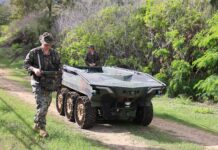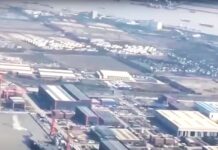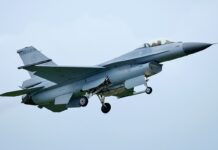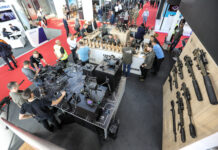In the aftermath of the Korean War (1950-1953), small-scale maritime industry grew rapidly in the Republic of Korea (ROK) to meet the domestic demand for fishing vessels and similar smaller craft. It was not until the 1970s that the economic growth programmes of the ROK Government began to encourage domestic corporations to invest in shipbuilding.
The initial target market was merchant shipbuilding with ROK industry rapidly making a name for itself. At the outset, the ships they built were not considered the most sophisticated, but were seen as affordable when they began to take a market share in the sector. Later on, the level of sophistication increased, meaning they were now taken seriously, and were also seen as a threat to markets previously dominated by European or Japanese manufacturers.
The country’s maritime industry continued to expand its capabilities and rapidly moved up the value chain, developing the capability to meet the most challenging requirements, to the point where ROK shipbuilders became a fixture on any listing of major merchant shipbuilding companies. Obtaining a leading position in this industry was one thing, but keeping a leading position in such a volatile industry was another. Merchant shipbuilding reflects the health, or otherwise, of the global economy. When the global economy is weak, merchant shipbuilding suffers, hence the periodic economic crises that have affected shipbuilders in the ROK, Europe and Japan. Nevertheless, the ROK remains a leader in terms of building merchant ships with cutting-edge technology, such as dual-fuel propulsion.
Industry Awakens
In the 1970s, the ROK embarked on the Yulgok Plan, a programme designed to make the country more self-reliant in terms of defence equipment acquisition and sustainability. Up to this point, the ROK Navy (ROKN) had been primarily equipped with US Navy surplus units, with local yards producing small patrol craft for example. By the end of the 1970s, Korean shipbuilders would start to make a major contribution towards the modernisation of the ROKN, with the introduction of new classes of frigates and corvettes.
The ROKN would receive nine locally built Ulsan class frigates, which would be commissioned between 1981 and 1992; of this class, two are now museum ships, five are in reserve and two are still considered active by the ROKN. The Donghae corvette class saw four units built, all commissioned in 1993; two have since been scrapped, one was expended as a target, and one was transferred to the Colombian Navy. Then came the Pohang corvette class, with 24 units built and commissioned between 1984 and 1993. Less than five units remain active, with a number kept in reserve and two utilised as museum ships.

A significant feature about the Pohang class is that so many units have been transferred to foreign navies. The ROK does this to strengthen diplomatic and commercial relations, potentially opening the door to the future sale of ROK defence equipment. Both Colombia and Egypt have each received a single corvette, with Peru, the Philippines and Vietnam each receiving two vessels.
Even as the ROK naval industry was expanding its capabilities with the construction of units for the ROKN, it was also taking its first tentative steps into the naval export market. In the lead was the Korea Tacoma shipyard (later absorbed into Hanjin Heavy Industries, now part of HJ Shipbuilding and Construction). At the end of the 1970s, the yard sold four Mandau class FAC(M) units to Indonesia, equipped with a 57 mm and a 40 mm Bofors gun, 20 mm Rheinmetall cannon and MM38 Exocet anti-ship missiles. Three of this class remain in service. They then went on to sell two Musytari class offshore patrol vessels (OPVs) to Malaysia, with one built in the ROK and one in Malaysia. These units remain in service after being transferred to the Malaysian Maritime Enforcement Agency in 2006.
Later on, at the end of the 1980s, Korea Tacoma landed its most important contract to date, with India acquiring seven Sukhanya class OPVs. Three units were built in the ROK and commissioned between 1989 and 1991, with four units built in India. The Indian Navy still operates six of these OPVs, with a single unit sold to Sri Lanka, where it also remains in service.
In recent years, South Korean yards have won significant contracts globally for replenishment ships and tankers. Daewoo Shipbuilding & Marine Engineering (DSME) won a contract to build four 39,000 tonne replenishment tankers for Britain’s Royal Fleet Auxiliary (RFA), based on the AEGIR design from BMT Defence Services in the UK. Subsequently, the Royal Norwegian Navy ordered a smaller displacement tanker version of the AEGIR design, also built by DSME. The Royal New Zealand Navy ordered a replenishment oiler from Hyundai Heavy Industries (HHI) in 2016, with HMNZS Aotearoa commissioned in 2020. Venezuela has the replenishment unit Ciudad Bolivar, acquired from the ROK in 2001.
The ROK naval industry is making significant strides in terms of exporting surface warfare units. At the end of the 1990s, DSME won a contract to build a frigate for Bangladesh to a modified Ulsan design. Then in 2013, DSME won a contract to build a DW3000 class frigate for the Royal Thai Navy (RTN); there was to be a second frigate purchased, but no contract was signed. However, it is in the Philippines that ROK industry has really made a breakthrough, with HHI winning numerous naval contracts. In 2016, HHI was awarded a contract to provide two Jose Rizal class frigates, the first of which was commissioned into the Philippine Navy in July 2020 and the second in March 2021.
HHI went on to win two other major Philippine Navy contracts against international competition. In December 2021, the company won the Corvette Acquisition Project with their HDC-3100 design, with a displacement of 3,100 tonnes and length of 116 metres. Two units will be acquired with first delivery in 2025. In June 2022, HHI was contracted for the Offshore Patrol Vessel Acquisition Project, with first delivery scheduled for 2025. The HHI solution is based on their HDP-2200 design OPV, with a displacement of 2,400 tonnes and a length of 94.4 m. In total, six units are due to be delivered.
Building the Future
The ability to win these export programmes comes from experience gained through meeting ROKN surface ship requirements. In the 1980s, frigates and corvettes represented the starting point for the naval industry, but the majority of the armament, electronics and other critical systems were sourced from foreign suppliers. Even then, licence production, offset requirements and technology transfers made an important contribution to ROK defence industrial development.
Each successive generation of surface warfare systems produced in the ROK has led to further industrial capability development. For example, the three KDX-I Gwanggaeto the Great class destroyers, launched between 1996 and 1998 at DSME, and commissioned between 1998 and 2000, represented a major advance in ROK naval shipbuilding, allowing the ROKN to replace ex-US Navy destroyers as their major surface unit. As before, much of the equipment was imported, yet by the time these destroyers went through a mid-life update in 2020-2021, critical systems such as the combat management system was replaced by ROK-designed and built systems.

Credit: US Navy
In the early 2000s, the ROKN embarked on the next stage of development with the introduction of the KDX-II Chungmugong Yi Sun-sin class destroyers, substantially larger and more capable than the previous KDX-I class. In total, six of these destroyers were built, three at DSME and three at HHI, with these ships commissioned between 2003 and 2008. The follow-on KDX-III Sejong the Great destroyer class was an even more formidable unit, again larger and more capable than the KDX-II and fitted with the Aegis Combat System, giving these units a national ballistic missile defence (BMD) capability, as well as a fleet air defence capability. HHI built two units and DSME one, with all units commissioned between 2008 and 2012. In 2019, HHI was awarded a contract for three KDX-III Batch II destroyers, with the lead ship ROKS King Jeongjo being launched on 28 July 2022 and due to be commissioned in 2024. Amongst other changes, the Batch II units have a larger displacement than Batch I units.
The other major surface warfare programme was based on the FFX frigate programme, with the objective being the replacement of existing Ulsan frigates and Pohang class corvettes. In 2010, HHI was awarded the first contract for what became known as the Incheon frigate class, HHI would go on to build three frigates, with STX Offshore and Shipbuilding (later K Shipbuilding) building three more. All units were commissioned between 2013 and 2016.
The next stage of the frigate programme was Batch II known as the Daegu class; these have an increased displacement over the previous Incheon class and incorporate more Korean content in terms of weapons and electronics. In total, eight units are to be acquired, four built by DSME and four by HHI.As of February 2023, five units are in commission with the ROKN, with two more units due to be commissioned this year and the final unit next year.
Batch III of the frigate programme covers six units, with lead ship ROKS Chungnam launched at HHI in April this year. Compared to the previous class, displacement in increased, as are anti-air warfare (AAW) capabilities. Surprisingly, the contract for the second frigate was won by a new player in terms of ROK naval shipbuilding, Samkang M+T (more recently renamed SK Oceanplant). Their bid was lower than those of HHI or DSME and it also appears that they won the contract for the build of the third and fourth Batch III frigates as well.

Credit: US Navy
Future Prospects
The fact that SK Oceanplant was able to win a major share of the Batch III frigate programme was undoubtedly a major shock to HHI and DSME, and also to other ROK shipyards that intend to compete for ROKN and other ROK Government business. The maritime industry had three big players in the form of HHI, DSME and Samsung Heavy Industries. Then there was HJ Shipbuilding & Construction (formerly Hanjin Heavy Industries) which had built the two Dokdo class LPH for the ROKN and, finally, K Shipbuilding, which, as previously mentioned, had built three Incheon class frigates for the ROKN.
It seems clear that the Defense Acquisition Program Administration (DAPA) wishes to see more competition in shipbuilding. However, on the other hand the more established ROK shipbuilders, having experienced difficult business conditions in recent years are less than enthusiastic about expanded competition. For one major shipbuilder though, new possibilities beckon. DSME has been lurching from one crisis to another for a number of years, with Hanwha Group expressing an intention last year to purchase DSME, which remains the fourth largest shipbuilder in the world.
Hanwha will acquire 49.3% of DSME and will have full management control with their takeover cleared by competition authorities in the EU, the UK, China, Japan and Singapore, amongst others. At the end of April, the ROK Government’s Fair Trade Commission (FTC) announced ‘conditional approval’ of the Hanwha takeover, meaning that the takeover can now proceed, although there will be reporting requirements to the FTC. According to South Korean news reports, once the takeover is complete, DSME will be rebranded as Hanwha Ocean. The Hanwha takeover will restore confidence in the shipbuilder and satisfy both DAPA and the ROKN over its long-term prospects.
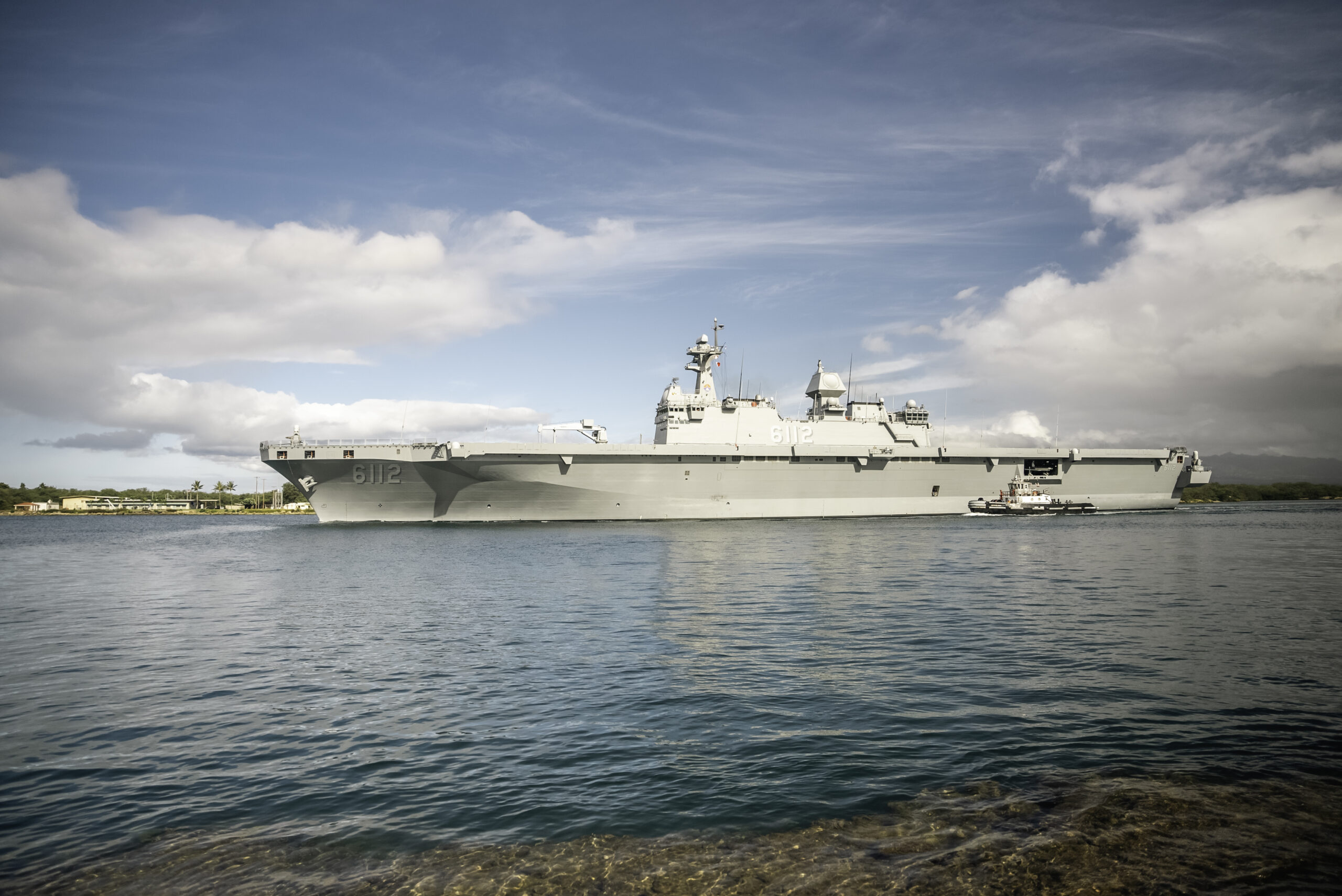
Credit: US Navy
Three Key Programmes
There are three key programmes underway that will define the future shape of the ROKN. In August 2020, the ROKN officially commenced a programme to acquire an aircraft carrier, with this effort subsequently receiving the CVX designator. The CVX was envisaged as operating 16 F-35B aircraft and eight helicopters, with the idea that the carrier would become operational in the first half of the 2030s. Now that appears to have changed, as DAPA and HHI are now said to be working towards the definition of a carrier with a displacement in excess of 50,000 tonnes and capable of operating the proposed naval variant of the Korea Aerospace industries (KAI) KF-21 Boromae fighter aircraft.
Inevitably, the change in the characteristics of the CVX will see a significant cost increase, while developing the KF-21N and accommodating it in the design of the carrier will require more time. Being reasonably optimistic, that could mean that the CVX will be ready in the 2035 time period. Budgeting for the CVX and its air group will be a key issue, as this will be a very expensive programme. Furthermore, there is very little point in having a single carrier, as a minimum of two will be required, further increasing the cost burden.
In 2019, there were the first reports of the ROKN working towards the development and acquisition of an ‘Arsenal Ship’. In the ROKN, this is referred to as the joint firepower ship (JFS) and the intention is to have three units by the end of the current decade. DSME (soon to be Hanwha Ocean) has been selected as the responsible yard for the JFS programme, but at this stage there are still many issues to resolve. These include baseline design, desired operational characteristics, missile numbers and type. In parallel, DAPA is working on the development of a new surface and submarine-launched ballistic missile (SLBM) to act as a deterrent to North Korea. Obviously, progress on the missile programme will have a bearing on the evolution of the JFS programme.

Credit: US Navy
Finally, HHI is under contract to DAPA and the ROKN to work on the new KDDX class destroyer. By the end of this year, the KDDX design should be finalised, allowing for the contract award for the first of this destroyer class in 2024. In total, six KDDX are required, and if standard ROKN practice is followed, two batches of three destroyers will be built. The KDDX will be equipped with an indigenous area air defence system, with other major armament and electronics systems being of ROK design and manufacture. The arrival of the KDDX will see the eventual phasing out of the KDX-I class destroyers, but the capabilities of the KDDX are far beyond those necessary for a simple KDX-I replacement. The intention is to have KDX-III like capabilities, using indigenous systems in a hull form with a smaller displacement.
David Saw





